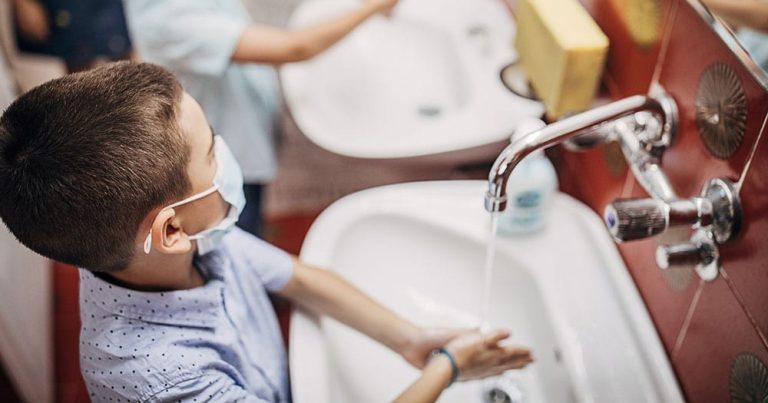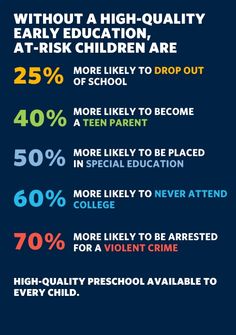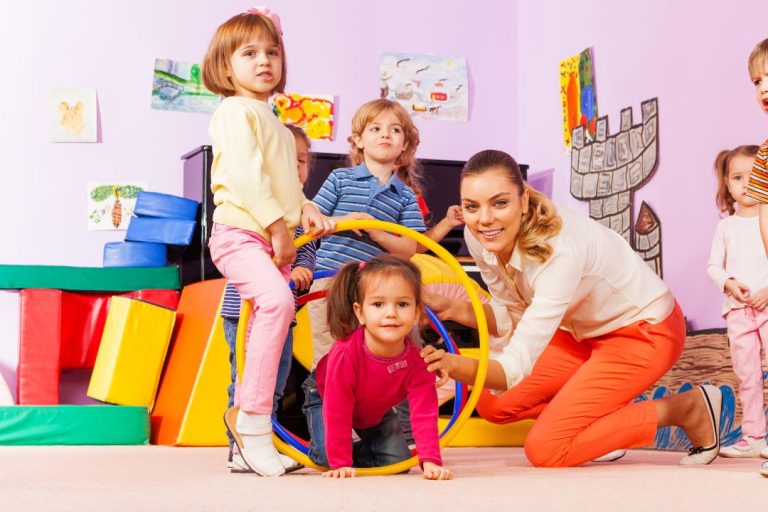Tips for Smooth Kindergarten Transitions

Smooth kindergarten transitions can be achieved by establishing routines, building connections with teachers and classmates, and gradually introducing new experiences. By creating a predictable schedule and encouraging open communication, children can feel more comfortable and confident during this significant change in their lives.
It’s essential to provide a supportive and nurturing environment to ease the transition and help children thrive in their new setting. Understanding the importance of a smooth transition to kindergarten can make a significant impact on a child’s overall well-being and academic success, setting the stage for a positive educational journey ahead.
As parents and educators work together to facilitate a seamless transition, children can feel empowered and excited to embark on their kindergarten experience.
Preparing Your Child For Kindergarten
Preparing your child for kindergarten is a crucial step in ensuring a smooth transition into their new educational environment. Emotional preparation, independence, and familiarizing with the kindergarten schedule are key aspects that parents can focus on to support their child’s readiness for this significant milestone. By employing effective strategies in these areas, you can empower your child to embrace the kindergarten experience with confidence and enthusiasm.
Discuss The Importance Of Emotional Preparation
Emotional preparation plays a vital role in ensuring a successful transition to kindergarten. It is essential to create a supportive and nurturing environment at home, where your child feels secure and valued. Openly discussing the upcoming changes and addressing any concerns or fears your child may have can help alleviate anxiety and promote a positive mindset. Encouraging them to express their emotions and reassuring them that it’s normal to feel a bit apprehensive about starting kindergarten can foster emotional resilience.
Strategies For Bolstering Independence
Bolstering your child’s independence is a key aspect of preparing them for kindergarten. Encouraging them to handle simple tasks on their own, such as dressing themselves, packing their backpack, and organizing their belongings, can instill a sense of confidence and self-reliance. By gradually introducing age-appropriate responsibilities, you can equip your child with the necessary skills to navigate the kindergarten environment with independence and autonomy.
Familiarizing With The Kindergarten Schedule
Introducing your child to the kindergarten schedule can help alleviate any apprehension they may have about the unknown. Familiarize them with the daily routine, including arrival and departure times, snack breaks, and playtime. You can simulate a kindergarten schedule at home to help your child become accustomed to the structure and expectations of their upcoming daily activities. This familiarity can reduce anxiety and facilitate a smoother adjustment to the routine of kindergarten life.
Tips For Smooth Kindergarten Transitions
Kindergarten can be an exciting yet challenging time for both children and parents. The transition to a new school environment comes with its own set of worries and adjustments. To make this significant milestone as smooth as possible, here are some expert tips to help parents and children navigate this new chapter with ease.
Establishing A Routine Before School Starts
Creating a predictable routine before the start of kindergarten can help children feel more comfortable and confident as they transition into their new school environment. Establishing a regular schedule for waking up, meals, playtime, and bedtime can provide a sense of stability and security, reducing anxiety about the unknown. This routine can also include activities that mimic what they will experience in school, such as storytime, art projects, or simple educational games.
Role-playing School Scenarios At Home
Engaging in role-playing activities at home can help children become familiar with what to expect in a school setting. Utilize pretend play by setting up a mini “classroom” with stuffed animals or dolls as classmates, and take turns playing the role of the teacher and the student. This can help children learn about following directions, taking turns, and participating in classroom activities, all while in a familiar and comfortable environment.
Gradual Introduction To Separation
Supporting a gradual introduction to separation helps both parents and children navigate the emotional challenges of starting kindergarten. Start with short periods of separation, whether it’s leaving your child with a trusted family member or caregiver for brief intervals or engaging in short playdates with new friends. Slowly increasing the length of these separations can help build a child’s confidence and independence, making the transition to kindergarten smoother.
Communication With Educators
Communicating effectively with your child’s educators is crucial to ensure a smooth transition into kindergarten. By establishing proactive lines of communication, you can work together to support your child’s individual needs and ensure a positive learning experience. Here, we’ll explore some valuable strategies to open up and maintain a dialogue with your child’s teachers.
Setting Up A Meeting Before The First Day
Prior to the commencement of the school year, schedule a meeting with your child’s kindergarten teacher or the school’s administration team. This will provide an opportunity to personally connect with the educators, familiarize yourself with the classroom environment, and address any concerns or questions you may have. During this meeting, inquire about the curriculum, daily routines, and classroom policies to gain a better understanding of what to expect for your child.
Discussing Your Child’s Needs And Preferences
Engage in an open dialogue with your child’s educators about their individual needs, strengths, and challenges. By sharing information about your child’s personality, learning style, and any specific requirements, you can assist the teachers in creating a supportive and tailored learning environment. This could involve discussing any allergies, behavioral concerns, or learning strategies that have been effective in the past.
Maintaining Open Lines Of Communication
Establish a communication channel that allows for ongoing discussions with your child’s educators. This could be through regular emails, phone calls, or by using the school’s communication platform. Be proactive in keeping the teachers informed of any changes or developments in your child’s life that may impact their behavior or well-being. Likewise, encourage the educators to share insights and updates about your child’s progress and any notable occurrences in the classroom.
Building Social Skills For School
Preparing your child to transition smoothly into kindergarten involves more than academic readiness. Building social skills is crucial for successful integration into a new environment. Here are some practical tips to help your child develop the necessary social skills for school:
Arranging Playdates With Future Classmates
Setting up playdates with future classmates can help familiarize your child with their soon-to-be peers. It provides an opportunity for them to form initial connections and reduce the anxiety of entering a new social environment. Interacting with potential classmates in a relaxed setting can contribute to a smoother transition into kindergarten.
Encouraging Group Activities And Sharing
Encouraging your child to engage in group activities and practice sharing fosters important social skills necessary for kindergarten. Participating in cooperative play reinforces the concept of taking turns, sharing, and collaborating with others, essential for successful interactions in a school setting.
Teaching Conflict-resolution Techniques
Equipping your child with conflict-resolution techniques aids in handling disagreements and challenges encountered during interactions with classmates. Teaching them to communicate effectively, empathize, and seek peaceful solutions provides essential tools for navigating social dynamics in kindergarten.
Home And School Collaboration
Collaboration between home and school is essential for a smooth transition to kindergarten. By aligning home rules with school expectations, sharing educational goals and milestones, as well as creating a consistent feedback loop, parents and educators can work together to support the child’s development and well-being.
Aligning Home Rules With School Expectations
Consistency between home and school environments is crucial for a child’s adjustment to kindergarten. Establishing consistent routines, such as bedtime, meal times, and homework schedules, can help children feel secure and prepared for the structure of the school day. Parents can communicate with teachers about the values and rules they enforce at home, allowing for a more seamless transition into the school setting.
Sharing Educational Goals And Milestones
Open communication between parents and educators about the child’s achievements and challenges is vital. Through regular updates and progress reports, parents can stay informed of their child’s development at school. Additionally, educators can provide resources and guidance for reinforcing learning at home, promoting a cohesive educational experience for the child.
Creating A Consistent Feedback Loop
A feedback loop between home and school fosters a collaborative approach to the child’s education. Regular discussions about the child’s progress, behavior, and social interactions can help address any concerns early on. Parents and educators can work together to identify areas for improvement and provide consistent support to ensure the child’s smooth transition into kindergarten.
Tailoring The Learning Environment
Tailoring the learning environment is crucial for a smooth transition to kindergarten. By making small adjustments at home, you can help your child adapt more seamlessly to the classroom setting and foster a love for learning. Here are some tips for tailoring the learning environment to support your child’s transition to kindergarten:
Adapting Home Activities To Complement School Themes
Integrating school themes into home activities can reinforce learning and create a bridge between home and school. Incorporate educational activities, such as counting objects during playtime, in line with the current school curriculum. For example, if the class is studying animals, plan a visit to the zoo or organize a nature hunt, aligning with the educational themes the child is learning at school.
Creating A Designated ‘Learning Zone’ At Home
Designating a specific area in your home for learning can help your child establish a routine and associate the space with focus and education. This area can be equipped with learning tools such as age-appropriate books, educational toys, and art supplies, providing a dedicated space for school-related activities and a sense of structure in the home environment.
Engaging In School-related Topics And Books
Discussing and exploring school-related topics and books at home can stimulate your child’s curiosity and reinforce what they are learning in the classroom. Encourage reading relevant books and engaging in conversations about the school day, expressing interest and enthusiasm for the topics being covered at school. This can provide continuity between home and school and foster a deeper understanding of the learning material.
Supporting Emotional Well-being
Supporting the emotional well-being of kindergarten students is crucial for a smooth transition. By recognizing signs of anxiety or stress, providing reassurance and understanding, and celebrating small successes regularly, parents and educators can nurture a positive emotional environment for the young learners.
Recognizing Signs Of Anxiety Or Stress
It’s essential to be attuned to the signs of anxiety or stress in kindergarten children. Look out for behavioral changes such as clinginess, withdrawal, excessive worry, or physical symptoms like stomach aches and headaches. Observing these signs early on allows for timely intervention.
Providing Reassurance And Understanding
Offering words of comfort and understanding can help alleviate anxiety in kindergarten students. Reassure them that it’s okay to feel nervous and that they are supported. Creating a safe space for expressing their emotions can foster a sense of security and belonging.
Celebrating Small Successes Regularly
Every small achievement in the kindergarten journey deserves acknowledgment. Whether it’s making a new friend, mastering a new skill, or simply participating in class activities, celebrating these victories reinforces a positive outlook and boosts confidence in the young learners.
Frequently Asked Questions For Tips For Smooth Kindergarten Transitions
What Are Some Effective Strategies To Help Ease My Child’s Transition To Kindergarten?
Transition to kindergarten can be smoother by establishing a routine, arranging playdates with future classmates, and reading books about starting school together.
How Can I Prepare My Child Emotionally For The First Day Of Kindergarten?
Prepare your child emotionally by discussing the positive aspects of kindergarten, visiting the school beforehand, and reassuring them that you’ll be there to pick them up after school.
Are There Any Practical Tips For Managing Separation Anxiety During Kindergarten Drop-offs?
Ease separation anxiety by keeping goodbyes brief and positive, establishing a goodbye ritual, and ensuring your child has a comfort item from home.
What Can I Do To Stay Involved In My Child’s Kindergarten Experience As A Parent?
Stay involved by volunteering in the classroom, attending school events, and maintaining open communication with your child’s teacher.
Conclusion
In helping your child transition smoothly to kindergarten, remember to stay positive and offer plenty of encouragement. By establishing routines, practicing basic skills, and communicating openly with your child’s teacher, you can boost their confidence and ease any anxiety. Keep the lines of communication open and stay involved to support a successful transition for your child.

Emma combines her teaching experience with her writing skills to produce engaging and informative content. She covers a range of topics, from classroom management to innovative teaching techniques.






3 Comments